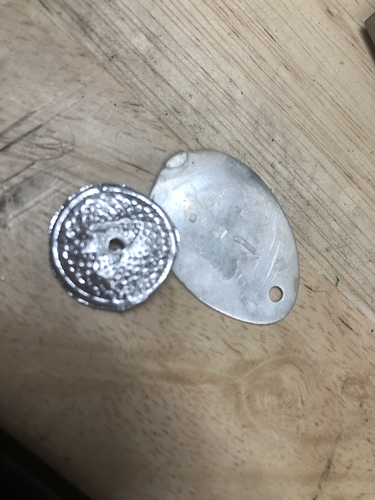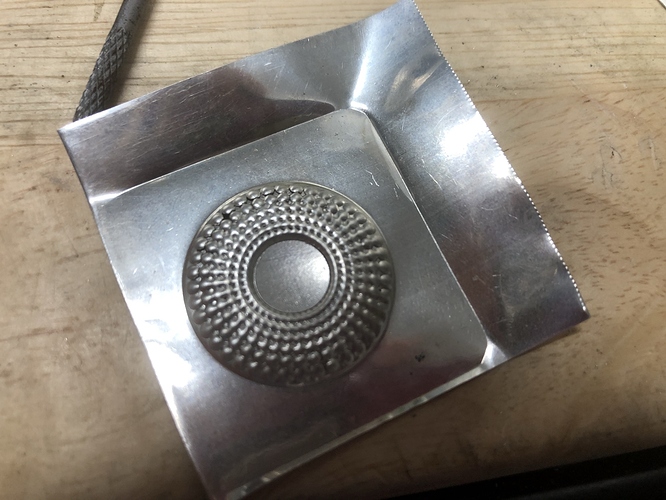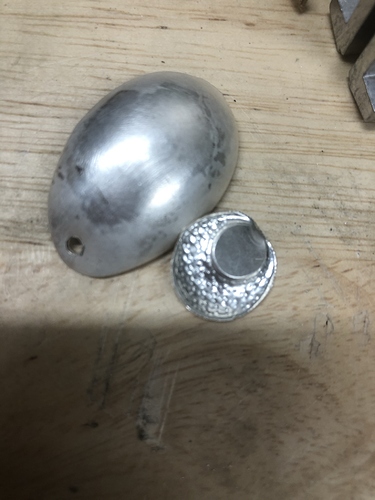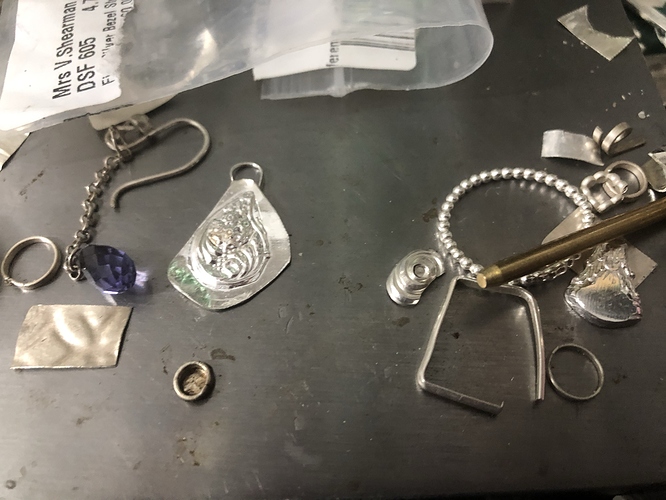Any help will be greatly appreciated. I've read everything
I can find, but it seems from what I've found that I'm the only
person for whom silver does not just melt and flow. Can this be
true?
No, it can’t be true. Silver doesn’t melt or refuse to do so based
on the person attempting it. it does it based on whether it’s hot
enough, or not.
When silver melts, it first gets rather slushy, and in that state
pulls together into a “wet” mass that may look fully melted, being
liquid on the outside and especially on the top. but at that point,
the top, where the torch hits, may be molten, but most of the mass is
still slushy or even solid at the bottom where it’s chilled by the
crucible.
You simply need to heat it hotter. it will be ready to cast when
the surface of the metal is not only wet and molten, but is
“spinning”, and the whole mass of metal in crucible is easily fluid
and moves and flows around the crucible easily. To get there, you
probably need the silver to be a good hundred degrees or more hotter
than you’re currently getting it.
You don’t mention what type of torch you’re attempting to melt the
silver with, nor how much silver you’re attempting to melt at once.
You may simply need a bigger or hotter torch. Another thing to watch
is what sort of surface the crucible is sitting on. Put the crucible
on a soft fire brick, charcoal block, or soldering pad, or some other
insulating surface so that surface doesn’t draw too much heat from
the bottom of the crucible. And, you may find it useful to preheat
the crucible thoroughly before you place the silver in it.
Be sure the entire mass of silver is fully covered by the torch
flame, be sure the flame is reasonably gentle and not oxidizing but
otherwise still good and hot, and be sure the metal stays clean and
oxide free by using a bit of boric acid, or a mix of boric acid and
borax powders, added to the top of the silver as you start to melt,
and a bit more added during melting if it looks like the surface is
oxidizing, or anything other than clean and bright.
Peter



